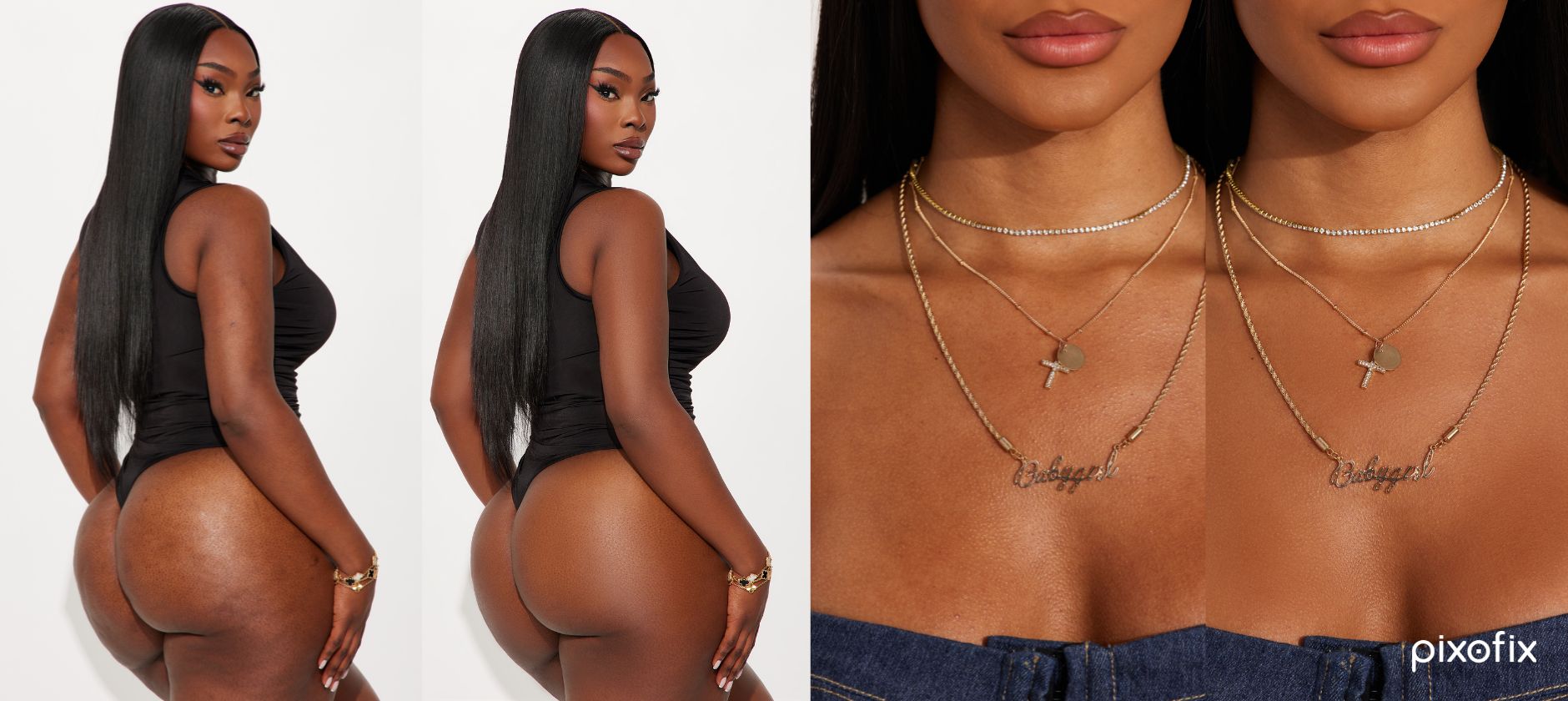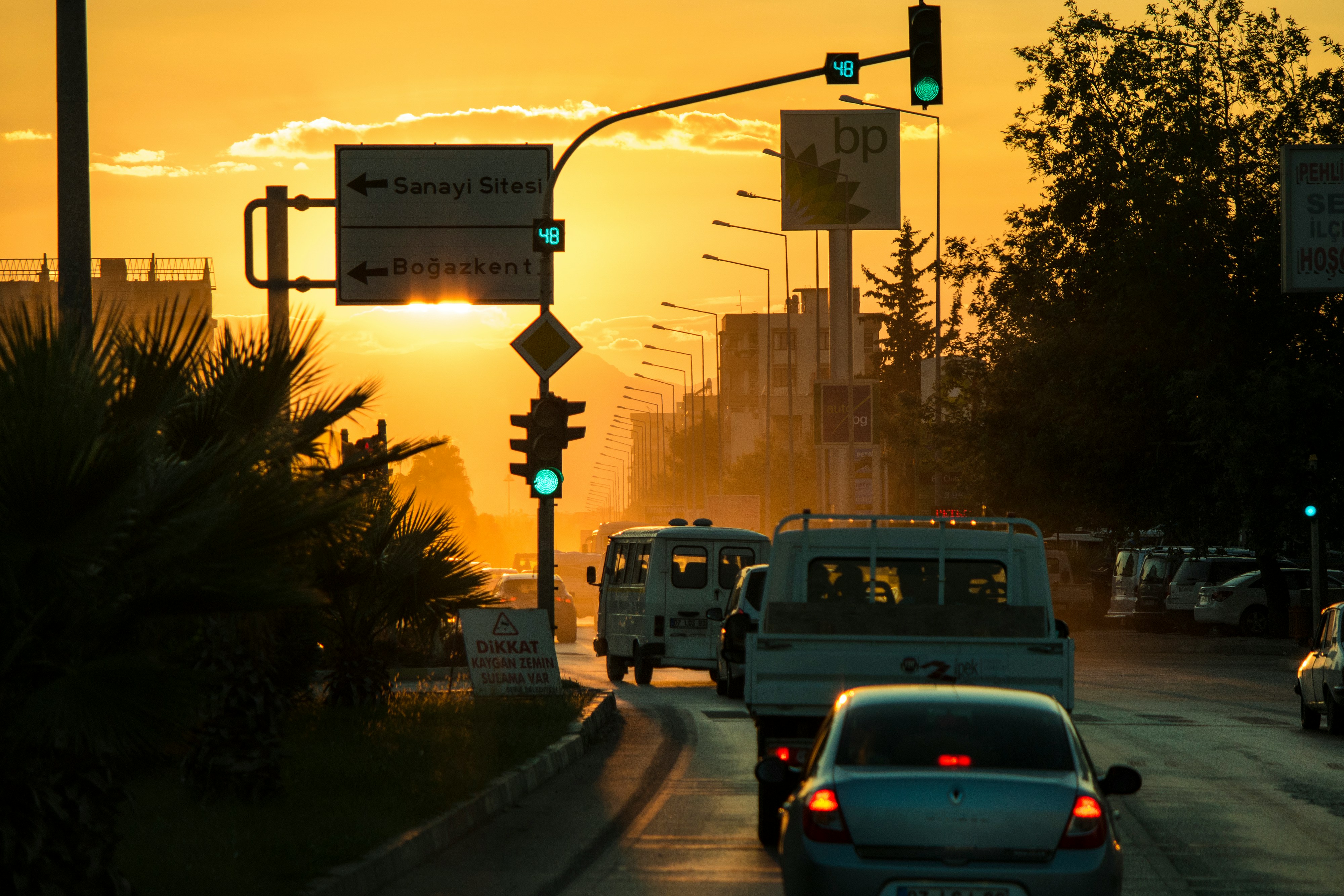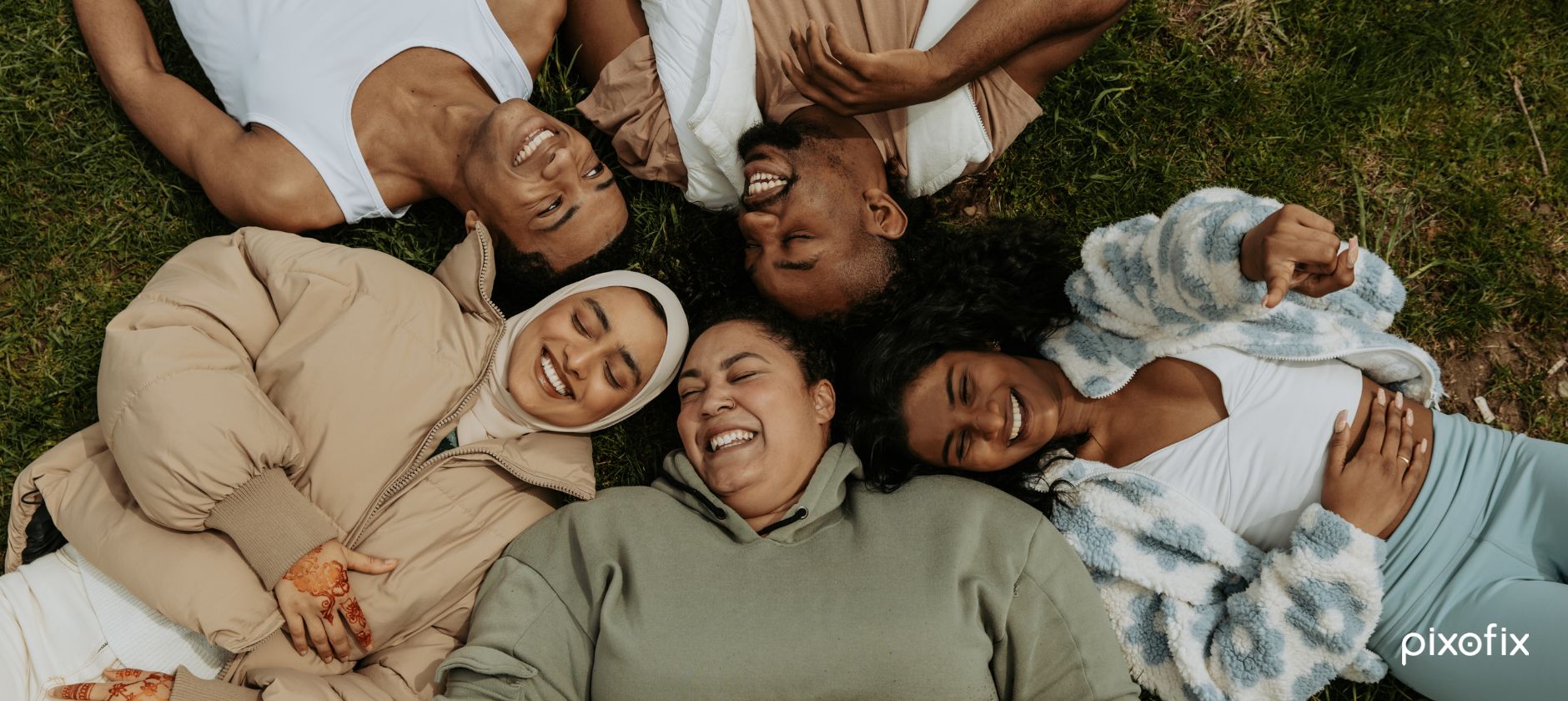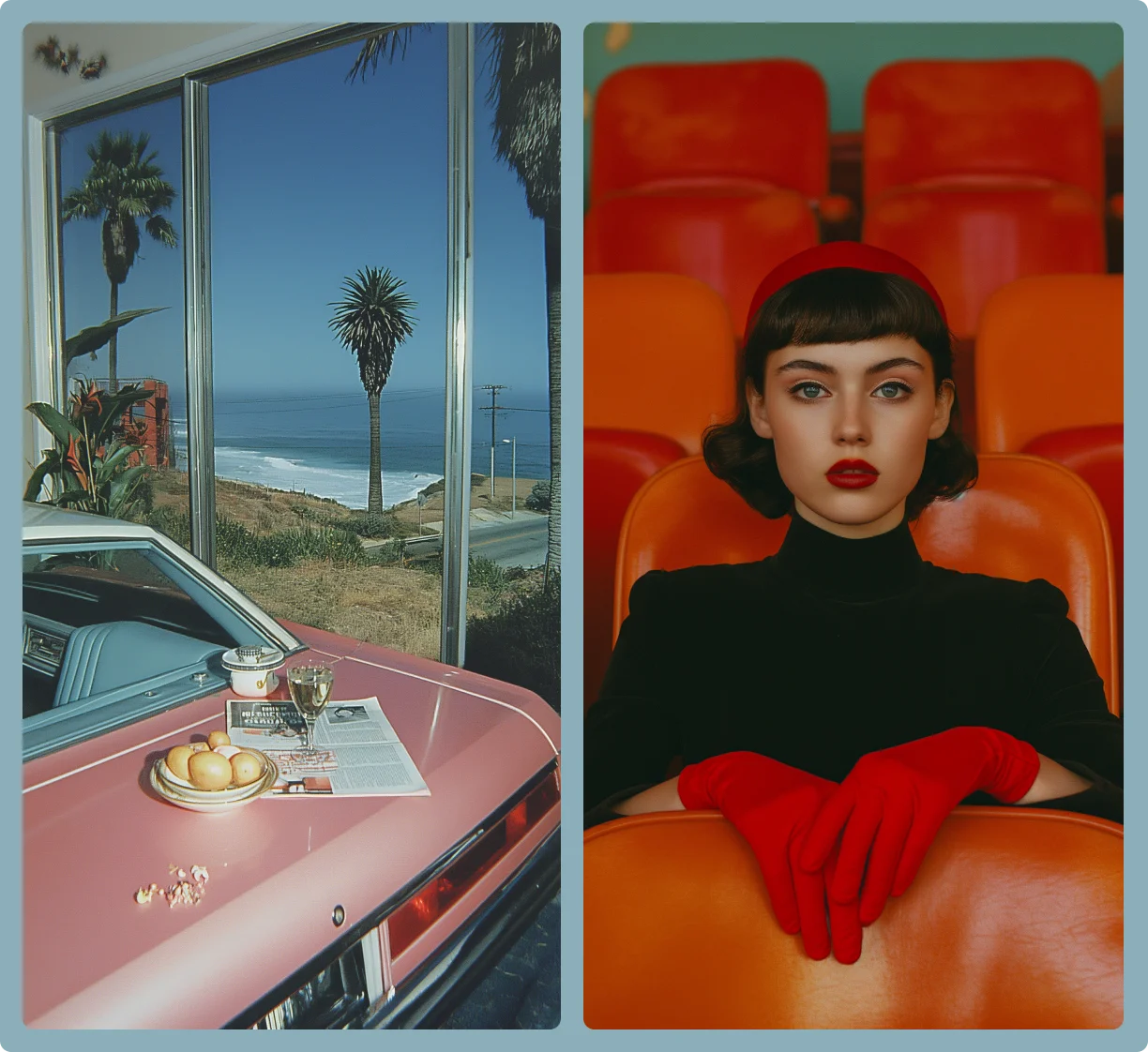Why Tracking Retouching Trends Matters
Photo Retouching Trends by the Numbers
To truly understand why the trends for 2025 matter, here’s what the latest data shows about the broader photo editing & retouching markets:
- The global photography market is estimated at USD 105.2 billion in 2025, and is forecasted to grow to around USD 161.8 billion by 2030, at a Compound Annual Growth Rate (CAGR) of about 4.4%. (Brimco.io)
- The photo editing software market was valued at roughly USD 1.15 billion in 2024, and projections show it reaching USD 1.82 billion by 2034. This reflects a CAGR near 4.7%. (Market US)
- For specialized photo retouching services, the market was about USD 3.2 billion in 2024. The forecast to 2026 shows this increasing to approximately USD 4.1 billion, with stronger growth (~7-8% CAGR) driven by demand in commercial photography, e-commerce, advertisements, and influencer content.
- More broadly, the image editing software segment is expected to grow significantly: from USD 1.37 billion in 2025 to USD 2.83 billion by 2034 (~8.39% CAGR). (Business Research Insights)
Impact on visual storytelling, brand identity & audience engagement
Retouching used to be cleanup. Now it’s strategy.
You’re not just fixing shadows or smoothing skin. You’re setting the tone — literally and emotionally — for everything that image stands for. And when the photo goes live, it’s doing way more than sitting in a carousel. It’s building trust. Or breaking it.
It’s easy to underestimate that. But here’s the thing: people don’t just look at images anymore — they read them. They’ve seen too many. Their radar’s sharp. If your retouching feels forced, they feel it. If it’s overproduced, they scroll. You’ve got a second, maybe two.
Brands that get this don’t aim for perfection. They aim for a vibe. They’re not asking, “Does this look clean?” They’re asking, “Does this feel right for us?”
That’s the shift.
Retouching isn’t behind the scenes anymore. It’s part of the message. It’s shaping the mood, the micro-emotions, the entire brand signal — whether you’re launching a product or posting behind-the-scenes.
And if you’re not deliberate about it, the audience will decide for you. Not always kindly.
How tech (AI, presets) and cultural shifts (authenticity, inclusivity) are reshaping workflows
Everything got faster. The software? Insanely good. You load an image, and boom — skin smoothed, tone matched, background cleaned, all before your coffee cools.
But just because it’s easy to do more doesn’t mean more is the move.
Here’s what’s actually happening: the culture’s pushing back. People want to see something real. Something familiar. Not just aspirational, but recognizable. So now we’re at this crossroads — AI says “Here’s every tool,” but audiences say “Don’t overdo it.”
Editors are adapting. Slowing down, weirdly. Looking at each photo and thinking, “What’s true in this frame?” Not “what can I fix?” but “what should I leave?”
Presets still help. Workflows are still tight. But the energy’s shifted. Instead of rushing to polish, teams are sitting with the raw image a little longer. Asking better questions. Making quieter decisions.
It’s not about editing less. It’s about editing wiser. Knowing when to step back. Knowing when the untouched version tells the better story.
That’s where 2025 is headed. And honestly? It’s long overdue.
Trends in photo editing and retouching 2025

1. Natural & Subtle Enhancements
Preserving skin texture – avoiding plasticized appearance
There’s a fine line between polished and plastic. And for a while, too many edits crossed it.
Remember those overly smoothed portraits? Skin looking like wax, eyes too sharp, shadows erased into oblivion? That era’s fading fast. In 2025, it’s all about keeping the humanity in the frame.
Texture matters. The little pores. Fine lines. A bit of unevenness. They don’t ruin the image — they make it believable. Editors are now treating skin like fabric. You clean it up, sure, but you don’t iron out every fold. Because once it looks fake, the viewer tunes out.
And it’s not just about aesthetics. It's about trust. Whether it’s a headshot, an ad, or a scroll-stopper on IG — if the skin looks real, the person feels real. That’s the connection. That’s the difference between someone pausing on your post... or swiping right past it.
Tools have adapted, too. Software like Retouch4me is actually trained to preserve skin texture. It enhances instead of erasing. And that subtlety? That’s the new flex.
Less-is-more retouching: blemish removal, tone correction, retaining authenticity
Here’s the paradox: the best edits are the ones no one notices.
We’re seeing a shift toward what some editors call “invisible retouching.” It’s not about dramatic transformations anymore. It’s about tiny moves — the kind that nudge a photo into balance without stealing the soul from it.
Remove a breakout, but leave the freckle. Even out tones, but don’t flatten the face. Fix that flyaway hair, but keep the light catching it just right. The goal isn’t perfection — it’s presence. You want the subject to feel like themselves on their best day, not a mannequin in a catalog.
This kind of editing takes restraint. Ironically, more skill than over-editing ever did. You have to know what not to touch. That judgment? That’s what separates pros from presets.
So in 2025, less really is more. The confidence is in the subtlety. The craft is in the quiet edits. And the result? Images that breathe.

2. AI-Powered Retouching Tools
Automated tasks: color correction, background removal, object cleanup
Some edits just aren’t fun. Fixing color casts, cleaning up messy backdrops, erasing distractions — it’s not creative, it’s just necessary.
That’s where AI’s doing its best work right now. It’s picking up the boring stuff.
You drop in a photo, and before you even blink, the colors are balanced, the weird object in the corner is gone, and that cluttered background? Cleaned. Not with hours of masking or painstaking brushwork — just one click. Sometimes two.
It’s not magic. But it’s close.
For editors who used to spend half their day doing cleanups no one even noticed, this is a complete shift. You get to spend more time playing with light, mood, story. And less time cloning out trash cans or matching skin tones across a batch of 50 headshots.
The AI isn’t trying to replace you. It’s clearing the runway so you can actually take off.
How plugins like Retouch4me and Luminar Neo streamline professional workflows
These aren’t gimmicks. They're tools real pros are leaning on hard.
Retouch4me, for example, does skin work that doesn’t scream “Photoshop.” It knows how to remove a blemish without flattening the whole face. Texture stays. Light stays. You don’t get that eerie, smoothed-to-death look that screams 2014.
If you’re working weddings, corporate, or high-volume portrait gigs? It saves hours. You run a hundred photos through it, and they come out clean, consistent, and natural. Not robotic. Not plastic.
Then there’s Luminar Neo. It’s more of a playground. One minute you’re swapping skies, the next you’re isolating subjects or tweaking colors in just the shadows. The real value isn’t in the bells and whistles — it’s in how fast you can test ideas.
You start thinking less about “how do I do this?” and more about “is this the look I want?”
That shift? That’s huge.
Put them together and you’ve got a stack that covers the basics and lets you experiment. You stop worrying about workflow. You start actually crafting images again.
That’s the point of AI in retouching. Not to automate creativity — just to make space for it.

3. Color Grading & Cinematic Effects
Using cinematic tones to evoke emotion
There’s something about a cinematic look that just pulls you in. It’s not about heavy filters or flashy edits. It’s the subtle stuff — the tone, the color curve, the mood baked into the shadows.
Photographers have been leaning into this more and more, and in 2025, it’s basically expected. Clients want emotion in the shot before the caption even starts. And the right grading does exactly that.
Cool tones can quiet a frame down. Warm shadows can turn something simple into something nostalgic. Push the blacks a little deeper and suddenly it feels like a film still, not just another digital snap.
The trick is restraint. A lot of people go too far — crushed contrast, overly teal-and-orange, clarity turned up to 100. But the best cinematic edits don’t shout. They hum. You feel them before you even realize what’s different.
That kind of emotional tone-setting? It’s become core to how brands and artists build a vibe.
Popular styles: high-key, low-key, vintage film aesthetics
Three looks are dominating right now — each with a different mood to play with.
High-key is all about brightness and softness. Washed whites, minimal shadows, tons of breathing room. It feels fresh, airy, polished. Great for lifestyle, editorial, beauty. But it’s not just exposure — it’s how the light wraps, how the skin glows, how the whites never quite clip.
Low-key is the opposite. Moody. Underexposed. Deep blacks, tight contrast, intentional darkness. It’s got weight. You see it a lot in portraits, brand storytelling, and music visuals — anywhere someone’s trying to say something serious without yelling.
Then there’s the film-inspired stuff. Grain, halation, bloom, faded shadows. It’s everywhere — even on TikTok. That soft blur around the edges, the muted greens and yellows, the slight imperfection in skin tones? It’s not a mistake. It’s a vibe. And it’s not going anywhere.
People want photos that feel like memories. These styles do that. They tell a story without needing words.
And honestly, that’s what the best edits have always done.

4. Bold, Authentic and Inclusive Portraiture
Embracing real features: freckles, pores, diverse bodies and skin tones
Here’s what’s changing: perfection is out. Honesty is in.
Photographers and editors are leaning into real faces — the texture, the quirks, the stuff we used to edit away without thinking. Freckles aren’t flaws. Neither are stretch marks or smile lines. And in 2025, leaving those details in is the boldest move you can make.
It’s not just about being raw. It’s about being real on purpose.
This shift is especially loud in beauty and portrait work. You’ll see campaigns featuring all shades of skin, all shapes of bodies, and no two faces looking airbrushed into the same glossy mold. Brands are realizing people connect with what they recognize — not what’s digitally idealized.
And on the technical side? Editors are learning to stop. That’s the hardest part. Not removing every bump. Not evening out every patch. Letting some asymmetry stay. Keeping the skin’s texture sharp where it counts.
It’s a mindset shift more than a skill change. And it’s shaping the way modern portraiture looks — and feels.
Evocative and emotional portraits – a move toward candid storytelling
There’s a different kind of portrait making the rounds now. Less posed. More felt.
The best images don’t always have the cleanest lighting or the sharpest detail. They just have something in them — a blink, a glance, a moment that feels like you walked in mid-thought. That emotional rawness? That’s what’s winning right now.
Editors aren’t trying to polish those moments out. They’re enhancing them. Maybe adding grain, maybe pulling the contrast low, maybe warming the shadows just enough to wrap the image in a little softness. Not for effect, but for feeling.
It’s storytelling, not just styling.
You’ll see it on Instagram, in ad campaigns, on portfolio sites — portraits that feel lived-in, not staged. The subject isn’t just “looking good.” They’re being seen. That difference is subtle, but it sticks with people longer.
And that’s the goal. Not to impress. To connect.

5. Vintage & Textural Effects
Retro/vintage filters: grain, film textures, date stamps
You’d think by now we’d be done with grainy film looks — but they’re more alive than ever.
Photographers are intentionally making images look older. Like they were shot on expired 35mm. Like someone pulled them out of a drawer from 1994. And it works, because it doesn’t just add style — it adds a little bit of memory.
Grain isn’t just a filter anymore. It’s an emotion.
You’ll see overlays that mimic light leaks, borders that replicate disposable cameras, even time stamps added on purpose. Not ironically — nostalgically. Because in a world where everything is high-def and razor sharp, something soft and imperfect feels different.
It slows the scroll. It tells the viewer, “this moment mattered.”
And it’s not just for personal work. Brands are jumping in too — fashion campaigns, music promos, lifestyle shoots — all using that retro touch to feel more grounded, more human, more now by feeling like the past.
Textural overlays: scratches, dust, and weather effects to evoke nostalgia
This trend isn’t just visual — it’s tactile.
You’re seeing more and more photos layered with actual textures. Not just digital noise, but scratches, scuffs, even hints of dust like an old scanner got involved. It’s like giving the image a physical presence, even on a screen.
And when done right, it doesn’t feel cheesy. It feels earned. Like this image has been through something. Like it lived in a box for years before making it to your feed.
The process is simple: you layer texture files — real scans, film plates, handmade artifacts — on top of your edit. You dial back the opacity, maybe brush out the highlights, and boom. The photo feels worn-in. Not old, just lived in.
It’s subtle. But it hits. Especially when paired with moody tones or warm light.
That kind of nostalgia doesn’t just make the image look cool — it gives it weight. And in a sea of clean, bright, same-same content? That texture makes it stick.

6. Creative Overlays: Double Exposure, AR & Graphic Elements
Double exposure & mixed-media overlays for artistic pop
Some edits just don’t want to stay still.
You look at them and it’s not one photo — it’s a collision. A face blending into clouds. A city skyline bleeding through someone’s skin. None of it’s clean. That’s the point. Double exposure is messy in the best way.
It’s not about technique anymore. It’s about mood.
You layer two shots that technically “shouldn’t” go together, and suddenly the frame tells a bigger story. Portrait over landscape. Soft face meets harsh skyline. You’re not documenting reality. You’re building something more abstract — emotional, layered, weird in a good way.
And the tools? Whatever. Sometimes it’s Photoshop. Sometimes it’s a janky phone app. Doesn’t matter. The magic’s in the mix.
This isn’t for clean brand work. It’s not for that “flawless lifestyle” vibe. It’s for when you want a photo that feels like a dream you almost remember — something that pulls people in, even if they don’t fully know why.
Incorporating AR stickers, doodles and graphic motifs in social media imagery
Then there’s the playful side of things. Zero rules. All vibes.
People are throwing scribbles on their shots like it’s middle school art class. Stars over cheeks. Wiggly lines around shoes. Stickers floating next to someone’s head like speech bubbles in a comic book. And somehow, it works.
It feels spontaneous. Hand-done. Like someone had an idea mid-edit and just ran with it. No grid. No symmetry. Just… a vibe.
You’ll see it all over social. Especially in Stories or Reels — quick moments that feel more honest when they’re not perfectly composed. Sometimes the overlays are subtle, other times they take over the whole frame. It depends on the mood.
But here’s the thing — this style, the doodles and AR bits and glitchy stamps — it’s not just decoration. It makes the photo feel like someone touched it. Like it passed through a human hand instead of just a filter stack.
And honestly? That’s what stands out now. The touch. The mess. The human part.
7. Hybrid Workflow: Photography Meets Videography
Seamless transitions from stills to motion (like Facetune Video, Luminar)
Everything’s blending right now — stills, video, animation, motion graphics. What used to be separate lanes are now one big creative freeway.
You shoot a portrait, then what? That same vibe needs to live in your video content too. Same color grade. Same tone. Same energy. And if it doesn’t, it all feels disconnected.
That’s where hybrid editing comes in. You’re not just retouching a photo anymore. You’re building a whole vibe that carries into reels, TikToks, promo clips — even swipe-up stories. And with apps like Facetune Video or Luminar, it’s actually doable without going full post-production mode.
You tweak the stills, then apply the same aesthetic to motion. It’s fast. It’s clean. And it keeps your brand looking like it knows what it’s doing.
Clients notice this. So do audiences. Even if they can’t name it, they feel the consistency. And it earns trust without trying too hard.
Benefit: cohesive visual storytelling across IG reels, TikTok, promos
Let’s be real — attention spans are toast. People scroll fast, tap fast, forget fast.
So when your content actually feels connected — like the photo, the video, the vibe all speak the same language — it slows things down. Just for a second. But that second matters.
You post a campaign image on Tuesday. Then a behind-the-scenes reel on Thursday. Then a TikTok breakdown on Saturday. If those don’t feel like they came from the same creative world, people won’t remember any of it.
Hybrid workflows solve that. You’re not reinventing the wheel for every format. You’re building once, then stretching it across stills and motion without losing the spark.
The tools are here. The demand is already high. The only real question is whether your editing flow is keeping up with how content actually moves now.
8. Sustainable & Ethical Editing Practices
Emphasis on transparency, minimal manipulation, “real beauty” campaigns
We’ve hit a tipping point. The pressure to look perfect? It’s cracked. Hard.
People don’t want flawless anymore. They want real. And not the curated “authentically styled” kind of real — actual real. So retouching, as an industry, is having to catch up.
What used to be standard — smoothing every pore, slimming faces, cleaning up everything to the point of plastic — now gets called out. Fast. Whether it’s on social, in comments, or by media watchdogs, overly edited images are losing credibility.
In response, brands are changing their tune. The big ones are leading with transparency. Disclosing edits. Running campaigns that leave stretch marks, scars, cellulite. Celebrating real skin, real bodies, real faces.
But it’s not just about being progressive. It’s strategic. Consumers trust brands that don’t lie with their images. That trust translates into engagement. Loyalty. Sales.
So yeah, the stakes are higher than just looking good. It’s about showing up honestly — and making sure your edits support that, not sabotage it.
Balancing aesthetics with authenticity — disclosing edits, avoiding overproduction
Here’s the thing. Editing isn’t the enemy. It’s the intent behind it that matters.
You can still enhance. Still clean up lighting, fix a distracting element, adjust tones. But now it’s more about guiding the viewer’s focus — not tricking them into believing something false.
That’s where this gets tricky. Editors have to walk a line. Make the photo shine, but don’t push it too far. Keep it clean, but not sterile. Beautiful, but still believable.
Some teams are even including subtle edit disclaimers. “Light retouching only.” “Color adjustments, no reshaping.” It might seem minor, but it signals something important: we’re not pretending here.
And when audiences see that? They relax. They engage. They trust that what they’re seeing is close to real — just with a little help.
That kind of editing? It’s not just ethical. It’s good storytelling.
9. Mobile Processing & Preset-Driven Retouching
Rise of phone-based editing: presets, one-tap styles (Luminar Neo, mobile Lightroom)
Editing used to mean sitting down at a desk, launching Lightroom or Photoshop, and grinding through sliders. Not anymore.
Now it’s all happening on phones — and not just casual edits either. Full-blown retouching. Color grading. Even batch processing. Tools like mobile Lightroom, Luminar Neo, and Snapseed are getting seriously powerful, and creators are taking full advantage.
You shoot, you swipe, you post — all within minutes. And it doesn’t feel rushed. It feels efficient.
The rise of presets plays a huge role here. You’ve got creators selling custom looks, photographers building personal brand styles, influencers sticking to one aesthetic. The result? A one-tap visual identity. You apply the preset, tweak a few things, and boom — your post matches your feed, your campaign, your whole vibe.
And when everything lives on mobile? You stay nimble. You’re editing on the go, reacting in real time, posting while the moment’s still fresh. That kind of speed? It used to be rare. Now it’s just how things work.
Consistent branding across DSLR and mobile imagery
Here’s where it gets interesting. The gap between mobile and pro camera content? It’s shrinking.
You can shoot a high-res campaign on a DSLR, then follow it up with behind-the-scenes content from your phone — and still make it all feel seamless. The same tones. The same texture. The same vibe running through every asset.
This is where presets and mobile tools shine. You build your brand look once, then carry it everywhere. Doesn’t matter if it was shot on a Canon R5 or an iPhone. The audience won’t notice — or care — as long as it all feels cohesive.
And for smaller teams or solo creators? This is huge. You don’t need a big post-production setup. You just need a strong visual identity and the right tools to keep it consistent.
It’s not about choosing mobile instead of DSLR. It’s about blending both so the audience never sees the seams.
10. Future Outlook: AI Artist Agents
“PhotoArtAgent” — using AI + language models for creative retouching rationale
This is where things get weird — and kind of amazing.
We’re moving into a space where AI isn’t just doing tasks. It’s thinking through them. Or at least, mimicking the process. Tools are popping up that don’t just edit for you — they explain why. You type in what you’re trying to evoke — “nostalgic with warm skin tones and a gritty mood” — and the AI builds the edit, layer by layer, with rationale.
That’s not automation. That’s collaboration.
The idea behind “PhotoArtAgent”-style tools is simple: what if the software acted more like an assistant than a machine? Something that understands creative direction, suggests options, and adjusts based on feedback. Like working with a junior editor who never gets tired, but still asks smart questions.
Right now, it’s early. Some of it still feels clunky. But the path is clear — language models and image tools are fusing. And the end result is a completely new way to approach editing.
Less dragging sliders. More telling the software what you want and having it build the mood with you.
Towards explainable, iterative, artist-guided adjustments
This next wave isn’t about speed. It’s about intention.
The goal is to make AI feel more transparent — not just spitting out a final look, but showing its thought process along the way. “I boosted warmth here to match skin tone across lighting shifts.” “I added grain to enhance emotional texture.” You get the logic. You can tweak the reasoning.
That’s huge for trust.
Editors want control. Creatives want to steer. And brands want to know what’s happening behind the curtain — especially when it comes to consistency and tone. With explainable AI edits, everyone’s on the same page.
It also opens the door for experimentation. You can run multiple variations, review the logic behind each one, and pick the edit that fits your story best. It’s not just faster — it’s smarter.
If this sticks (and it looks like it will), editing won’t be about mastering tools. It’ll be about directing them.

%20(7).jpg)



%20(9).jpg)
.png)

.png)
